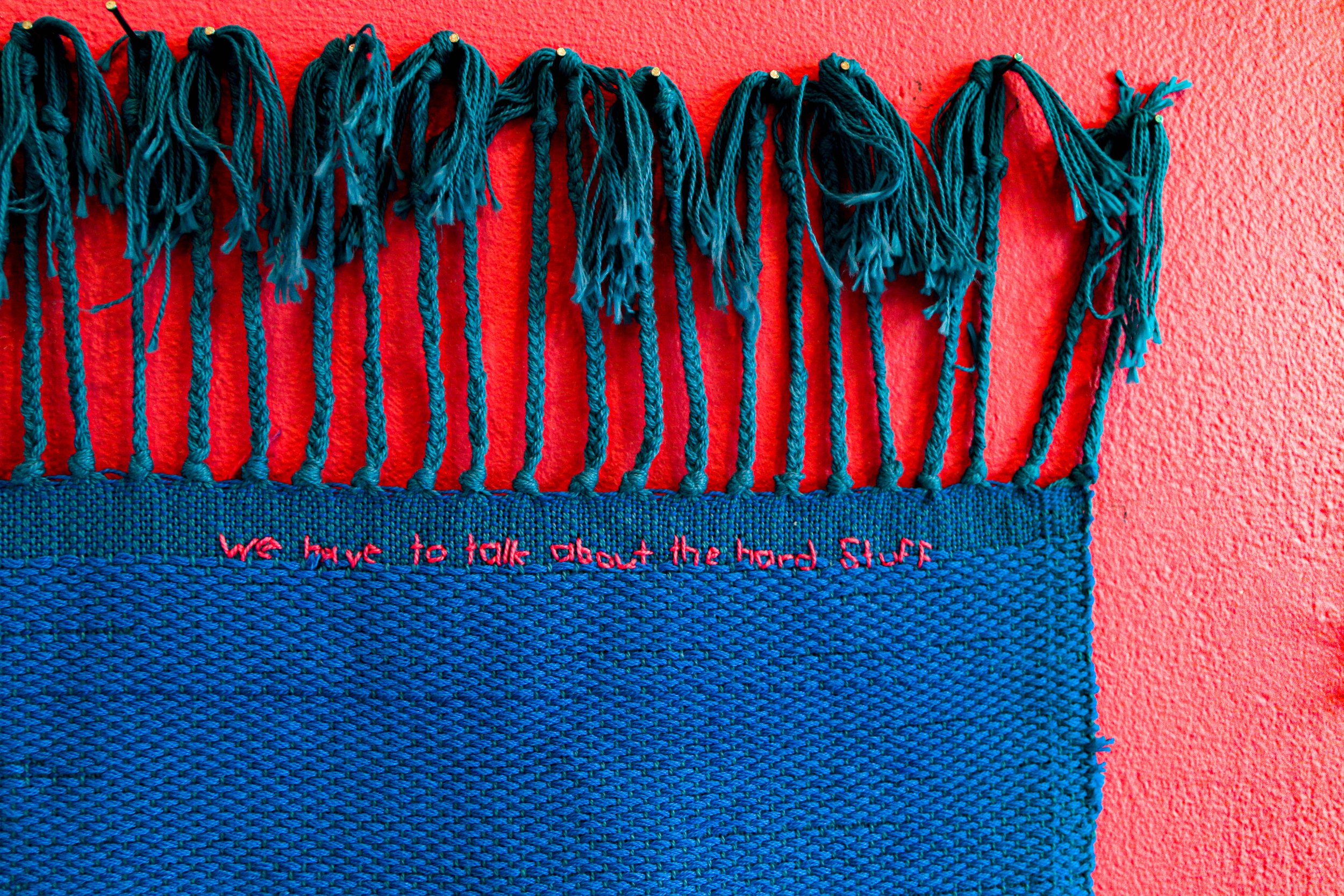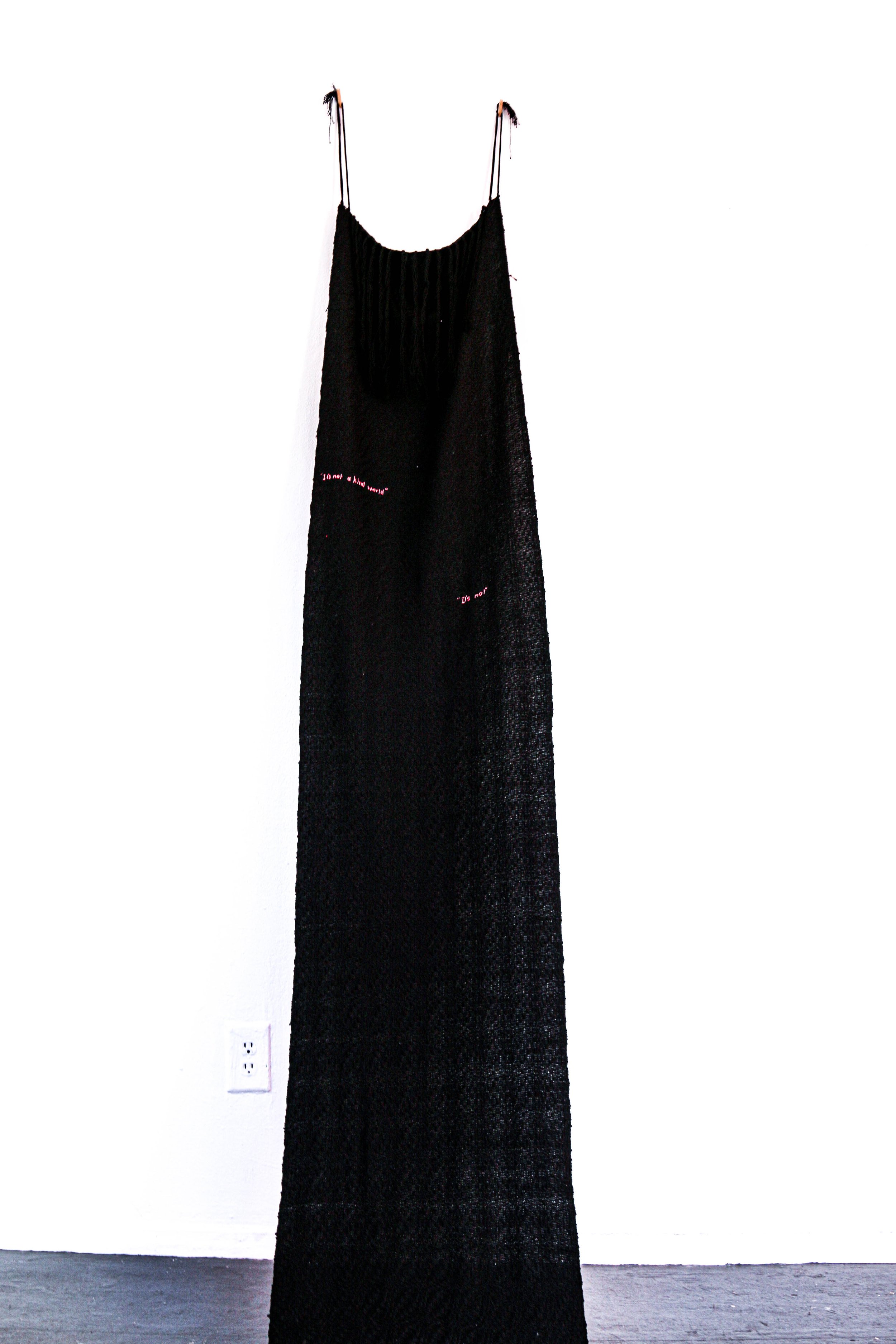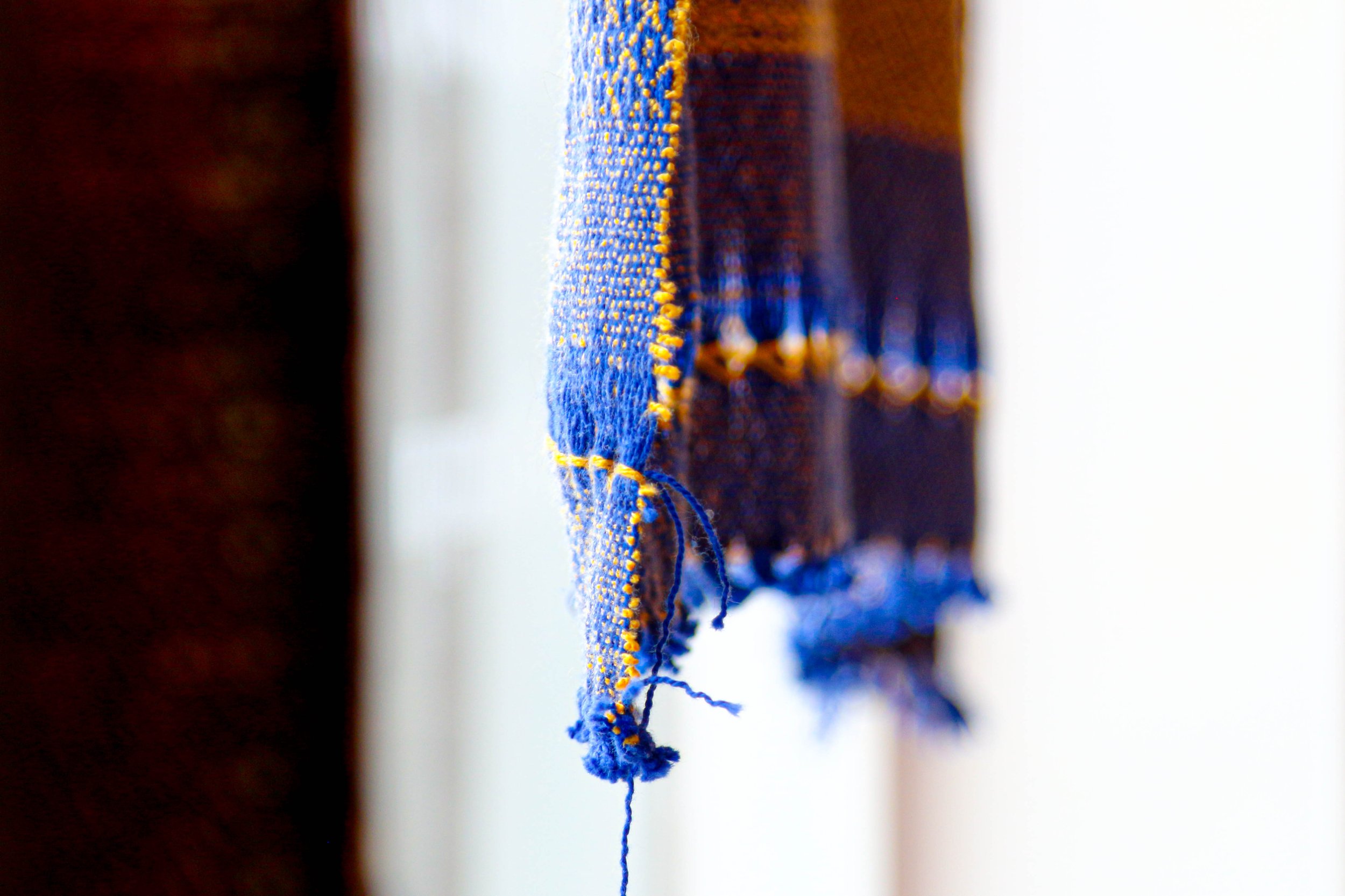A little food is a feast
Images of: We have to talk about the hard stuff, It’s not, and It always used to feel like this, by Sanaa Humayun
December 2, 2022 - January 21, 2023
by Sanaa Humayun
writing by Kiona Callihoo Ligtvoet
To Sanaa;
to everyone you’ve generously shared with;
to visitors following the stories in A little food is a feast;
“‘Hey,” Dent said, floating down from the ceiling. “Share-sies?”
Shu closed her eyes and shook her head.
“She’s too hungry,” Eliza said. “Here. Have your own marshmallow. This is for Dent.”
Dent’s marshmallow was just as large. He sucked it in as if it was water and smacked his lips. He solidified; the threads of him wove back together and you couldn’t see through him anymore.
“Why is food bigger on the other side?”
“It’s the land of the dead,” Eliza said. “Day is night there. Summer is winter. A little food is a feast.’” (1)
–
It’s a sunny morning during the last week of November when Sanaa facetimes me from Whippersnapper’s tiny gallery space in Tkaron:to. From my home in amiskwaciwâskahikan, I watch her float around the space between weavings and redacted letters, listening to her careful thoughts on artworks that have become more than just that. She wonders about placement and fiercely wants to get it right, because not only are these woven works about the intimacy of her own memories, but also the vulnerability extended to her by the people she has loved and have loved her in return. Each work is a story, an inside joke, a love letter, and a willingness to repair. She archives woven stories passed from hand to hand between cities, jobs, and studios, while bringing with her both gentle and painful fluctuations of reciprocity, and evidence of mended secrets and personal histories that she continues to keep.
Sanaa says to me, that for her, showing love is a process of sharing food and care, and being met with the same love from what little you can give. This is how I first get to see A little food is a feast, with Sanaa’s worries, her earnest resolutions, and the familiar sound of both of our laughter, over distance and late morning coffee.
–
With an invitation of care and trust, A little food is a feast welcomes us through the gallery’s exterior windows where redacted letters face outward towards the neighborhood. Handwritten exchanges between Sanaa and her dear ones recall sweetly clumsy times from their younger selves, the aches that come with distance, and the reassurances they’ve built in acknowledging one another’s wounds.
Behind the letters are two weavings hanging from wooden dowels. With their backs to the window, they offer a curtain of privacy to those inside the space. It always used to feel like this is a diptych, one gold with blue, and the other blue with gold. In the lower corner of each piece, there’s small, hand embroidered text. It starts-
“It always used to be like this”,
the diaristic stitching trailing into its partnered piece, continuing,
“We’ll never be like them”.
The whispered promise between the pieces is gentle and quiet, with evidence of mistakes in the patterns, and unfinished mending along frayed edges. We don’t need to know, nor are we offered the reasonings behind these promises. The promise isn’t spoken to us; it’s not our exchange to be soothed by, or ours to uphold. Still, we listen and understand their bittersweetness, hanging side by side, bits of sunlight from the window behind stretching through thinly woven threads.
On the wall beside, 83 hangs in a triptych of pink, peach, and blue. Sanaa tells me that this is a celebratory picture of her and her two siblings; their love, and the ways they’ve grown outwards from each other, while still tracing themselves back to the same place. It honors how they’ve kept each other safe, how each has ensured the other survives, and how they’ve woven new places to exist, laugh, and find comfort outside of the necessities inherited by them generationally. Each weaving hangs in their differences, together making the whole of an embroidered sun. The threads of its beams reach upward and out, extending away from one another, but still interlocked in their distance. The design comes from a tattoo they all share. Each sibling carries this reassurance with them; a promise on their skin, and now also woven, that they’ll return to each other.
It’s not hangs on the far wall of the gallery, and extends itself in a steady stream of black across the floor. The weaving is held up by collections of its frayed fringes, bowing in the middle from the weight of its length. It’s an overshot weaving, meaning there are two layers. The bottom layer is woven with thin thread that holds the piece together as its base; the second creates a thick surface of raised texture. If the top layer were to be cut away, its back would be able to stand on its own. But both layers together create a weaving that puckers across its length like scar tissue, and on its surface in small, pink, hand embroidered text it reads-
“It’s not a kind world”
Lower down, as if providing space for silence between,
“It’s not.”
These words, though heavy, confide and soothe. They acknowledge pain without trying to reason it, coach it, fix it in its completion. It intimately reveals to us the comfort of being known, and of knowing, through hardship and insecurity. In this piece, and in the relationship between words spoken, betterment is not a condition to love, nor is love earned through neglecting the scars.
Lastly, on a magenta wall surrounded by redacted letters, rests We have to talk about the hard stuff. Its pinks, blues and oranges weave together into a sunset, reflecting across still waters between mountains. Fringes cascade from the bottom of the piece, the threads dipped in blue dye. They cling to each other like wet hair after a swim. The weaving is a love letter to a place and a person, offering reassurance and rest between secrets kept. The letters carefully arranged around it tell a non-linear story of adolescence, adulthood, and learning to come back to one another again and again. Bubble letters span the tender awkwardness of youth, the exhaled relief of long talks on road trips after too much time apart, and ultimately, trusting each other to be received as chosen family. It feels like a shared diary swapped back and forth, before coming together in a place that feels safe and precious. With sunsets, mid-day swims, and a promise to heal together.
In A little food is a feast, Sanaa shares with us stories of joy, forgiveness, and connection. She doesn’t try to convince us that they are without pain or grief, but instead comforts us through careful mending and reciprocity.
When she asked if I would write this piece, I smiled and knew that in return, it had to be a letter. To all of you, but also to her. Sanaa, growing with you is patient and kind. Our friendship has been fueled by gossip, grudges, unwavering understanding, revenge, joy, and acceptance for how we change. I don’t know if I would have stayed in the art world if I hadn’t met you, and we hadn’t been there for one another. I know that the bits of what I can give will be met by you in a dish of our own, solidifying the woven threads of us too.
You've lovingly prepared A little food is a feast; feeding us, and ensuring that we leave with a feeling of fullness. Each secret kept in its redactions, a reminder of our own plates. What we’ve kept and what we can share. You should be so proud of such a special gift. I’m happy to have received it.
(1) Robinson, Eden. In Trickster Drift, pg. 318. New York: Knopf, 2018.
Kiona Callihoo Ligtvoet (she/her) is a multidisciplinary artist practicing in amiskwaciwâskahikan on Treaty 6 Territory. Kiona grew up West of the city near the hamlet of Calahoo where she lived with her moshom and relatives on scrip land. Her family lines are Cree and Métis descending from Michel First Nation, as well as Dutch and mixed European. Kiona’s work draws from feelings of loss and enfranchisement, but also from deep belly laughter and a gentle fondness for where the histories between herself and her family overlap and disperse.
Working alongside other artists in initiatives of community care, Kiona co-organizes Making Space in partnership with Sanaa Humayun. She likes visiting her moshom on the farm, and gossiping with her mom, relatives, and friends on the prairies.




